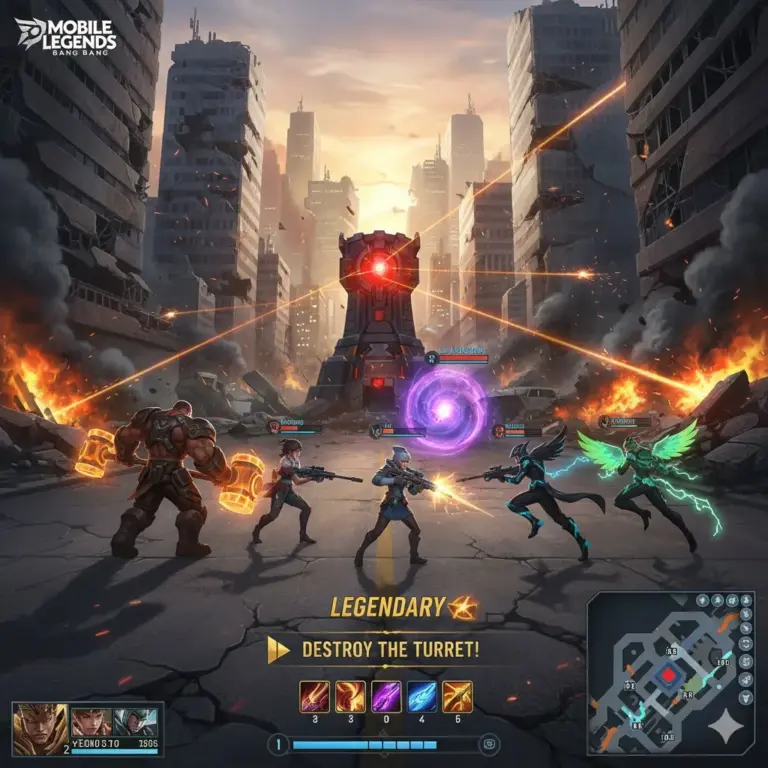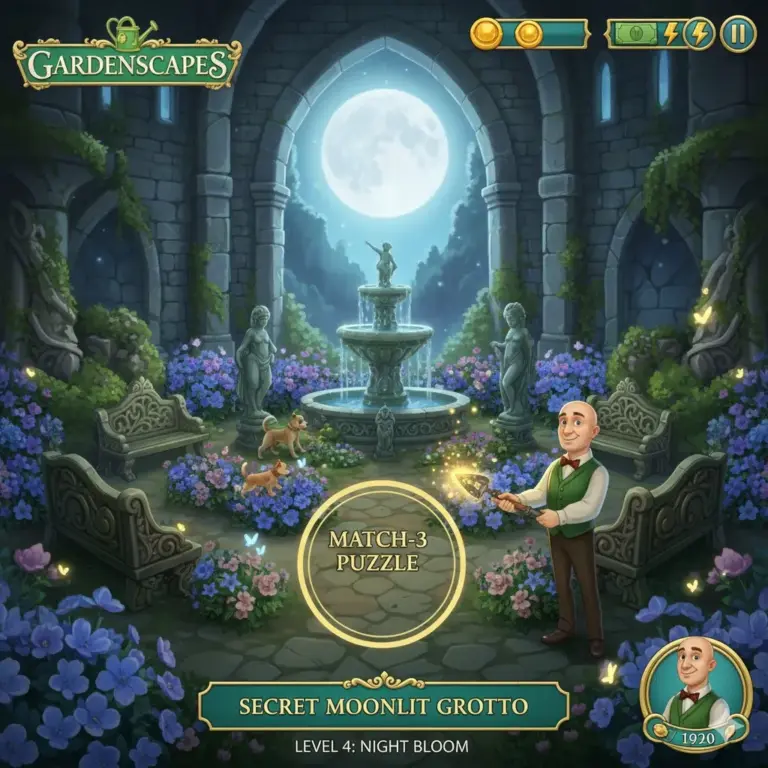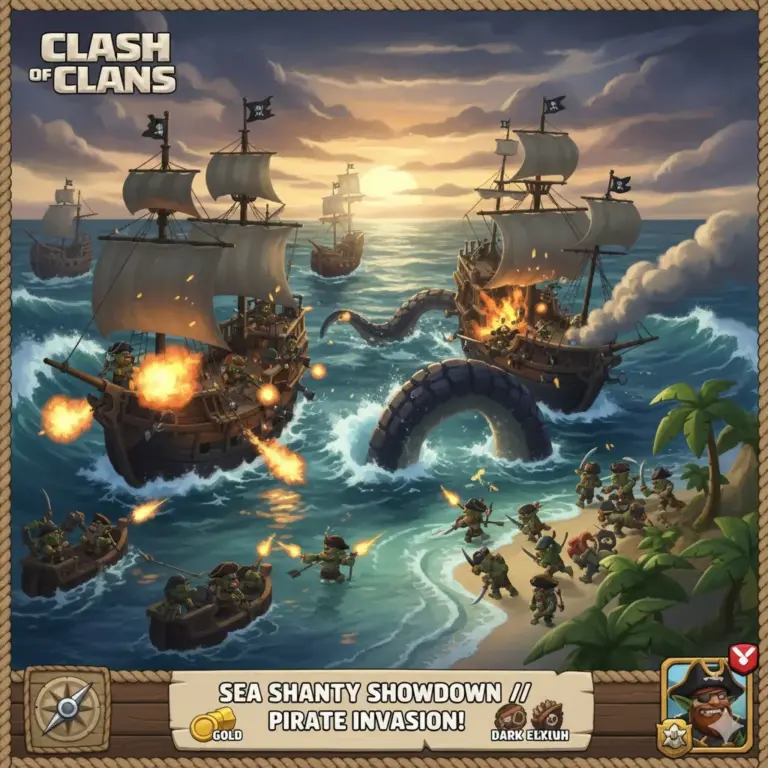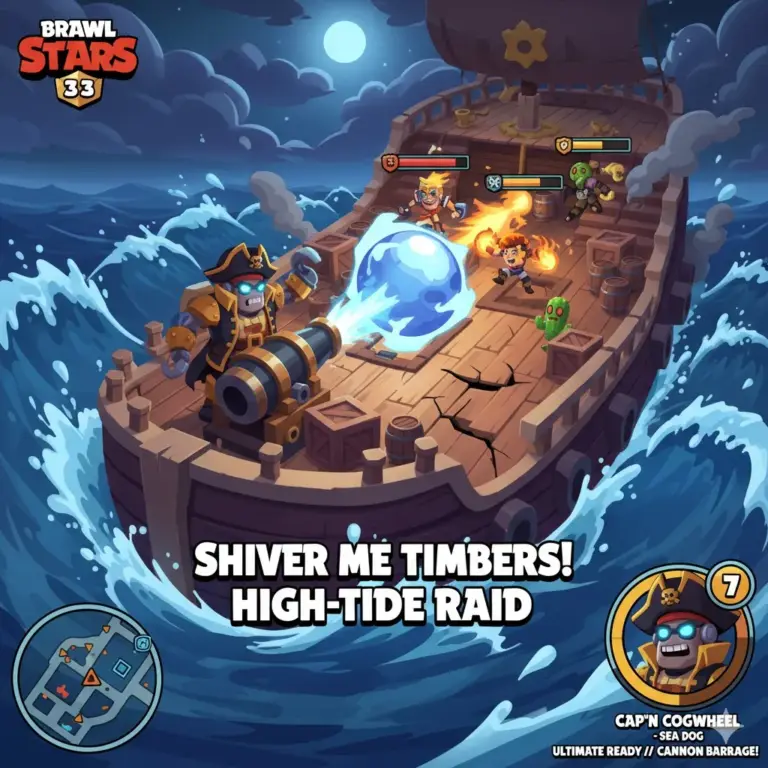Genshin Impact Review 2025: A Titan’s Journey – Still Worth the Grind?
In late 2020, a game launched that fundamentally broke and reshaped the entire free-to-play (F2P) market. That game was Genshin Impact. It wasn’t just a mobile game; it was a sprawling, breathtakingly beautiful, open-world action RPG that delivered a AAA console experience to every device, for free. It was, and still is, a global phenomenon.
Fast forward to 2025. The world of Teyvat has expanded exponentially. We’ve traveled from the wind-swept fields of Mondstadt to the fiery, war-torn lands of Natlan. The game has generated tens of billions of dollars and boasts a player base in the high tens of millions. It is, by all accounts, one of the most successful games of all time.
But for a game that has been a “live service” for over four years, two crucial questions emerge:
- For a new player, is it simply too late? Is the sheer volume of content an unclimbable mountain?
- For a returning player, has the infamous end-game grind been fixed, or is it the same “Artifact Hell” that caused you to quit?
This in-depth 2025 review will explore the unrivaled beauty of Genshin Impact’s exploration, its elemental combat symphony, and the deep, frustrating end-game loop that defines it as a beautiful, demanding, and often contradictory masterpiece.

The World of Teyvat: A Benchmark in Beauty and Exploration
Genshin Impact’s crown jewel, its undeniable hook, is the world of Teyvat itself. When it launched, the comparisons to The Legend of Zelda: Breath of the Wild were immediate and obvious: a vibrant, cel-shaded art style, a stamina-based system for climbing and gliding, and a world brimming with puzzles and secrets.
In 2025, that comparison feels almost quaint. Teyvat has grown into a continent of staggering diversity. You will:
- Glide over the german-inspired valleys of Mondstadt.
- Uncover ancient contracts in the Chinese-inspired, mountainous terrain of Liyue.
- Navigate the storm-locked, feudal Japanese-inspired islands of Inazuma.
- Delve into the lush, academic rainforests and vast, ruin-filled deserts of Sumeru.
- Dive into the stunning, French-inspired underwater clockwork nation of Fontaine.
- …and now, explore the volcanic, tribal landscapes of the newest nation, Natlan.
The joy of Genshin is discovery. It is turning a corner and seeing a glowing “Oculus” (collectible) on a cliff, then spending 10 minutes figuring out how to climb, glide, or puzzle your way to it. It’s stumbling upon a hidden chest, a small environmental puzzle, or a “Seelie” (a guiding spirit) that leads you to a reward.
All of this is wrapped in a musical score that can only be described as S-tier. Each region has its own orchestral theme that swells and shifts as you explore or enter combat. This is a world crafted with love, and its exploration aspect remains undefeated in the F2P space.
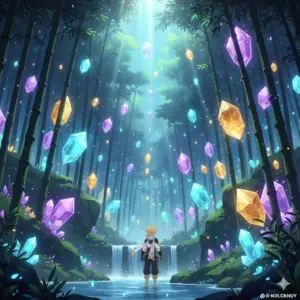
The Combat: A Symphony of Elemental Reactions
Genshin’s combat is the “action” counterpart to Honkai: Star Rail’s turn-based strategy. It’s a real-time, four-character-swap system built entirely around one concept: Elemental Reactions.
Every character is aligned with one of seven elements: Pyro (Fire), Hydro (Water), Anemo (Wind), Electro (Lightning), Dendro (Nature), Cryo (Ice), or Geo (Earth).
The entire combat loop is a high-speed dance of applying elements and triggering reactions.
- Hit an enemy with a Hydro attack (“Wet”).
- Swap to a Pyro character and hit them again.
- BOOM: You trigger “Vaporize” for a massive 2x damage multiplier.
- Swap to an Anemo character to “Swirl” that Pyro status onto all nearby enemies, spreading the fire.
Since the addition of the Dendro element, this system has become even more complex and F2P-friendly, with reactions like “Hyperbloom” (Dendro + Hydro + Electro) allowing even low-investment characters to deal incredible damage.
Building a team is about synergy. It’s not just about four strong individuals; it’s about a team that can enable, support, and trigger these devastating chain reactions. When it clicks, the combat is a flashy, satisfying, and surprisingly deep power fantasy.
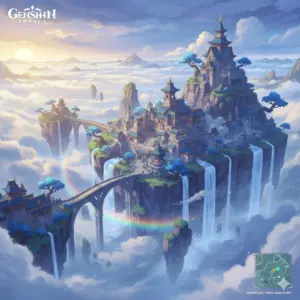
The End-Game: The “Resin” Wall and “Artifact Hell”
For all its beauty, Genshin Impact has an Achilles’ heel. It’s the same problem that has plagued the game since 2020: the end-game grind.
This grind is governed by Original Resin, the game’s stamina system. This resource regenerates slowly over the day and is the only gateway to all meaningful progression:
- Character EXP books.
- “Mora” (in-game money).
- Talent (skill) upgrade materials.
- Weapon ascension materials.
- …and most importantly, Artifacts.
Artifacts are Genshin’s 6-piece “gear” set (similar to HSR’s Relics). This is the “true” end-game, and it is a brutal, multi-layered RNG system known by the community as “Artifact Hell.”
To get one perfect piece, you must be lucky five times:
- Set: Get an Artifact from the correct 5-star set you’re farming.
- Piece: Get the piece you need (Flower, Plume, Sands, Goblet, or Circlet).
- Main Stat: Get the correct main stat (e.g., CRIT DMG% on a Circlet, which is a low-probability roll).
- Sub-Stats: Get 3-4 desirable sub-stats on that piece (e.g., CRIT Rate, ATK%).
- Rolls: When you level up the Artifact, the random upgrades must roll into those desirable sub-stats.
You can spend months of your daily Resin farming a single dungeon and still not get the “perfect” piece. This system is the game’s single greatest source of player burnout. And in 2025, it has not fundamentally changed.
Your weekly “challenge” is the Spiral Abyss, a 12-floor, two-team gauntlet that is the only true test of your team’s power. For veterans, this is the only end-game. The lack of new, permanent, “hard” end-game modes remains a top criticism.

The Gacha: Generous Pity, But a F2P’s Marathon
The monetization is classic HoYoverse. You use “Primogems” (pull currency) to wish for 5-star characters and weapons. The system is identical to HSR’s:
- 90-Pull Pity: You are guaranteed a 5-star within 90 pulls (with a “soft pity” starting around 75).
- The 50/50: You have a 50% chance to get the “featured” banner character.
- The Guarantee: If you “lose” the 50/50, your next 5-star is 100% guaranteed to be the featured one.
This is F2P-friendly because it’s plannable. If you save up ~160-180 wishes, you can guarantee the character you want. The game is also extremely generous with free Primogems from exploration, quests, and events.
However, the “trap” here is the Weapon Banner, which operates on a different, more expensive pity system. Worse, the “standard” 5-star characters you get from losing a 50/50 have become power-crept and are generally undesirable in 2025.
The New Player Experience: A Blessing and a Curse
So, is it too late to start Genshin Impact in 2025? The answer is a paradox.
The Blessing: You have, right now, thousands of hours of S-tier, premium-quality, fully-voiced story and exploration content available to you for free. It is arguably the best value proposition in the history of gaming.
The Curse: You have thousands of hours of story content to get through. Genshin Impact does not have a “skip story” button. The main story quests (Archon Quests) are mandatory. To participate in the latest 2025 story chapters or “flagship” events, you must have completed all prerequisite Archon Quests. This can be a 100-200 hour barrier to entry for a new player just to catch up.
Furthermore, the game lacks many “quality-of-life” (QoL) features that its younger sibling, HSR, launched with. Daily commissions are a manual chore, the Resin system is rigid, and there is no “auto-battle” for the daily grind. Genshin feels like the “boomer” of the HoYoverse family—still powerful, but set in its old ways.

Final Verdict: Is Genshin Impact Worth Playing in 2025?
Genshin Impact remains a titan. It is a beautiful, sprawling, and mechanically rich game that you can play for a thousand hours without spending a dime. Its combat is fast and engaging, and its world is a masterpiece of art and music.
However, it is not a “side game.” It is a “main game” that demands all of your time. Its end-game is a pure, unadulterated RNG grind that has not evolved. Its new-player experience is a daunting marathon.
Where Honkai: Star Rail respects your time, Genshin Impact demands it.
You should play Genshin Impact if:
- You love Zelda: BOTW-style open-world exploration and discovery.
- You want a deep, fast-paced, real-time action combat system.
- You are looking for a “main game” to sink hundreds or thousands of hours into.
- You have the patience for a long, epic (and unskippable) fantasy story.
You should AVOID Genshin Impact if:
- You are looking for a casual “side game” to play in 20-minute bursts.
- You have limited time and hate being “stuck” behind hours of mandatory story.
- You are easily frustrated by extreme, multi-layered RNG gear grinds.
- You want a “skip” button.
Genshin Impact is a journey, not a race. In 2025, that journey is longer than ever, but it is still one of the most beautiful and rewarding adventures in all of gaming.
Final Score:
- Gameplay (Exploration & Combat): 5/5
- Story & World-Building: 5/5
- End-Game & Grind: 2/5 (Brutal RNG and lack of new modes)
- F2P Friendliness / Monetization: 4/5 (Generous pity, but a brutal gear grind)
